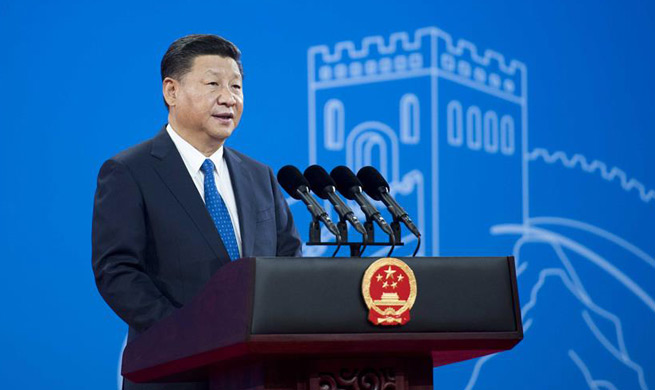WASHINGTON, Sept. 26 (Xinhua) -- Scientists have found a potential new way to attack Ebola, the deadly virus ravaging West Africa just two years ago, according to a study published Tuesday in mBio, an open-access journal of the American Society for Microbiology.
A protein called Tim-1, or T-cell immunoglobulin and mucin domain-containing protein 1, plays a key role in the last stages of Ebola infection and some mice without Tim-1 survived after being exposed to the virus, said the study.
"It was previously thought that the Ebola virus infects all types of cells but not T-cells, but here we show that the Ebola virus directly interacts with T-cells and specifically Tim-1," said principal investigator Alexander Bukreyev, professor of the University of Texas Medical Branch.
The Ebola virus, commonly lethal within seven to 10 days, effectively disables the immune response by a variety of mechanisms after entering the bloodstream.
It first shuts down dendritic cells, the sentinel cells that alert the rest of the immune system to a viral infection.
This allows the virus to multiply uncontrollably and infect many organs.
"Eventually, cells start dying and exploding, releasing their contents into the bloodstream, and the immune system then launches its entire arsenal of weapons at once in what is known as a cytokine storm," the researchers said.
"While this hurts the virus, it causes massive collateral damage to its host. The more severe the storm, the more likely it is lethal," they said.
In the new study, the researchers focused on studying Tim-1 because it was recently demonstrated to be an attachment factor for the Ebola virus.
Bukreyev and colleagues demonstrated that Tim-1 knockout mice had a modified inflammatory response to Ebola infection and some of the mice survived a lethal Ebola virus challenge.
In vitro studies demonstrated the Ebola virus directly binds to the Tim-1 protein, activating CD4 T-cells and triggering the cytokine storm.
The knowledge, Bukreyev said, could be used to develop novel therapeutics to target Tim-1 or the cascade of reactions triggered by Tim-1, in order to reduce the cytokine storm.
While several vaccines and therapeutic strategies are currently being assessed, supportive care remains the primary method of treating patients with Ebola.
















